Meet the golf course manager: Tom Jennings
The course manager of Calcot Park Golf Club in Berkshire talks about adapting to an unpredictable climate, the work the club put in to ensure the course bounced back following the 2018 drought, educating members about the products he uses and the plans his team have for a new irrigation system.
Situated on the Berkshire / Hampshire border, Calcot Park GC sits within an exclusive private estate. Its parkland setting enhances the ambience of the course and there is an abundance of wildlife including badgers, foxes and deer. The changing seasons are complemented by the colours of the mature trees and shrubs which abound on the course.
Designed by Harry Colt, 89-year-old Calcot Park is an 18-hole course where the seventh, the signature hole, is played across a lake to an elevated green.
We speak to course manager, Tom Jennings, about his work and to find out more about this delightful golf course.
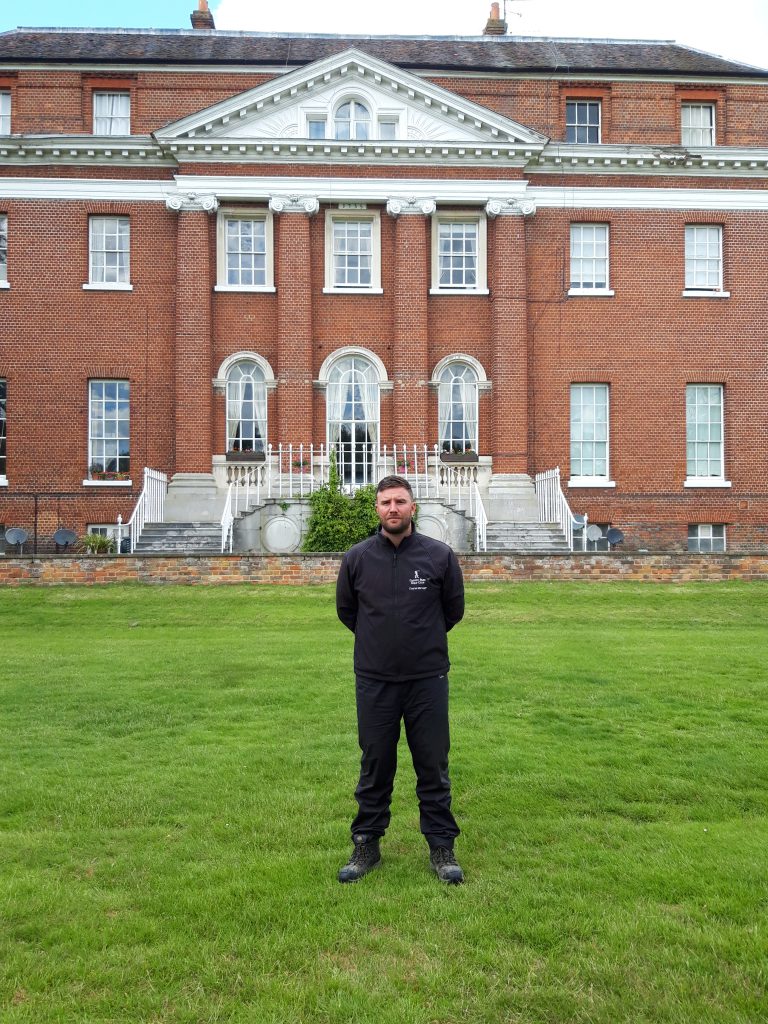
Can you give a description of your background, your path to greenkeeping and how long have you now been at Calcot Park Golf Club?
I started my greenkeeping at Swinley Forest Golf Club after successful work experience placements. I worked at Swinley Forest for eight years under Lawson Bingham and John Band. I then took the job as first assistant at Sonning Golf Club and was promoted to deputy course manager within a year. After seven years at Sonning golf club I then took the position at Calcot Park Golf Club as course manager. All of my training for my NVQs, for example chain sawing and spraying, were done at Swinley Forest. I started work at Calcot in October 2018.
What is the size of your team?
At Calcot Park we have seven green staff. My deputy course manager is Kirk Hall, the workshop manager is Andy Winchcombe, the first assistant is Bridget Brady and the other members of my team are Gary Boulton, Simon Mallock, Paul Knight and Bradley Tuckett. I go through my daily and weekly workload with Kirk and have weekly meetings with Andy to ensure that the machines are set and ready to go.
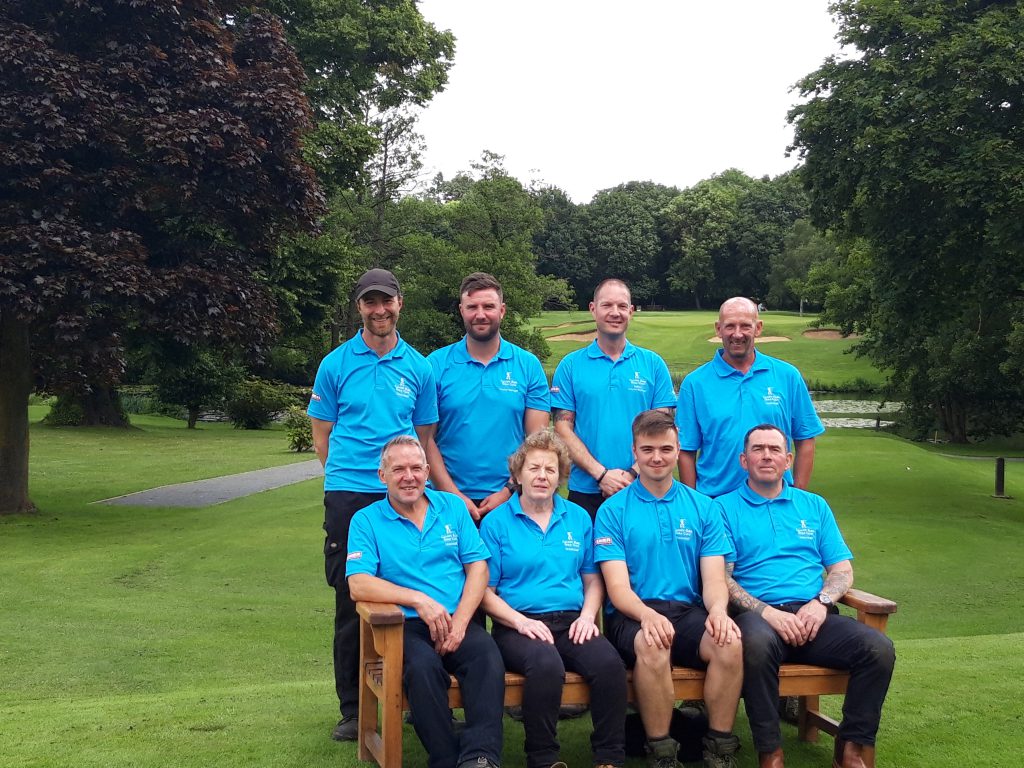
What would you say are the biggest challenges you currently face and how do these impact on the team?
Environmental challenges are my biggest challenges; trying to manage when aeration and top-dressing needs to be done to ensure the course stays consistent. Trying to work to the weather pattern which can affect my spray timings – and often sprays may be a last-minute decision due to the change in weather. I am very lucky that I have a flexible team and if we need to stay on to get work done they will keep working to ensure the job at hand is done.
You said you personally have had a very long standing relationship with Rigby Taylor throughout your career. Who do you work with, what are the things that matter to you about the relationship you have and how does it benefit you, the team and the course?
Most of the products I use are Rigby Taylor; I have a fantastic relationship with Gareth Acteson who I have known for over 10 years. Gareth’s knowledge and advice is second to none. The after care and back up support that I get from Gareth gives me support in what I do and ensures all the products are used to their full potential which in turn boosts the course. The products speak for themselves and I have nothing but positive feedback from my directors and members at Calcot Park.
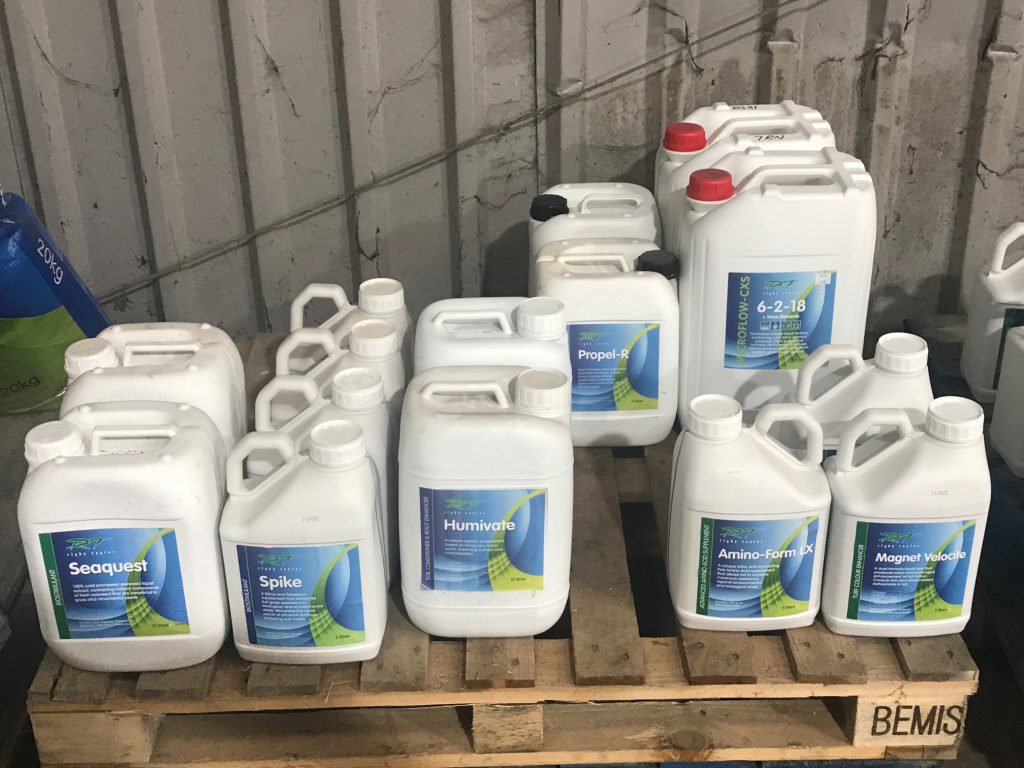
Which Rigby Taylor programmes do you use, how do you decide on the most beneficial products for the course and what results have you seen, especially following the particularly challenging 2018 summer?
I have a programme set in place for each area of the course from greens to tees to fairways. When I joined in October 2018 after the summer drought I decided it was a must that we overseed our fairways. Working with Gareth, we used a Rigby Taylor R6CRT seed sown at 20 grams per square metre. As well as aerating fairways, scarifying fairways, using liquid feeds and applying a wetting agent programme, the fairways have come back.
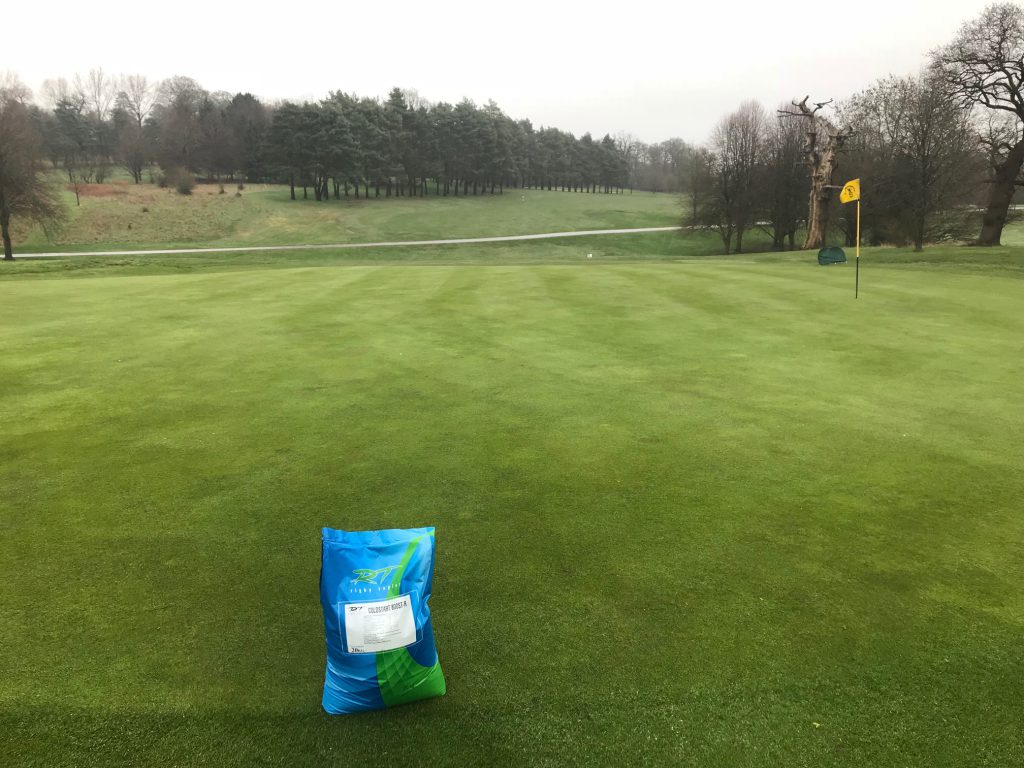
You spend time communicating and introducing products such as those supplied by Rigby Taylor to the club’s membership. Why do you do this, how do you feel it helps you, your team, the club management and the members?
Calcot Park is a members’ club and I feel it is important to show the members what their money is being spent on.
Giving them an insight into the practices and products we use helps educate our membership.
Communication is extremely important to me in keeping the club’s members informed that we are using the best products for their golf club.
Education is something you are passionate about. How do you ensure the value of your team is increased individually and as a whole, and what are you currently doing to further your own personal development?
Education and keeping my team fully trained is extremely important to me. I was given a chance at Swinley Forest by Lawson Bingham and John Band to go on as many courses and gain as much experience as I could. I will be forever grateful to them both. I am using their practices on my own team, putting my staff through college, chainsaw qualifications and spraying qualifications. I would like to keep learning myself and I am looking at doing my level 5. I think no matter what position in a greenkeeping team you are, you should always strive to be the best and keep learning every single day.
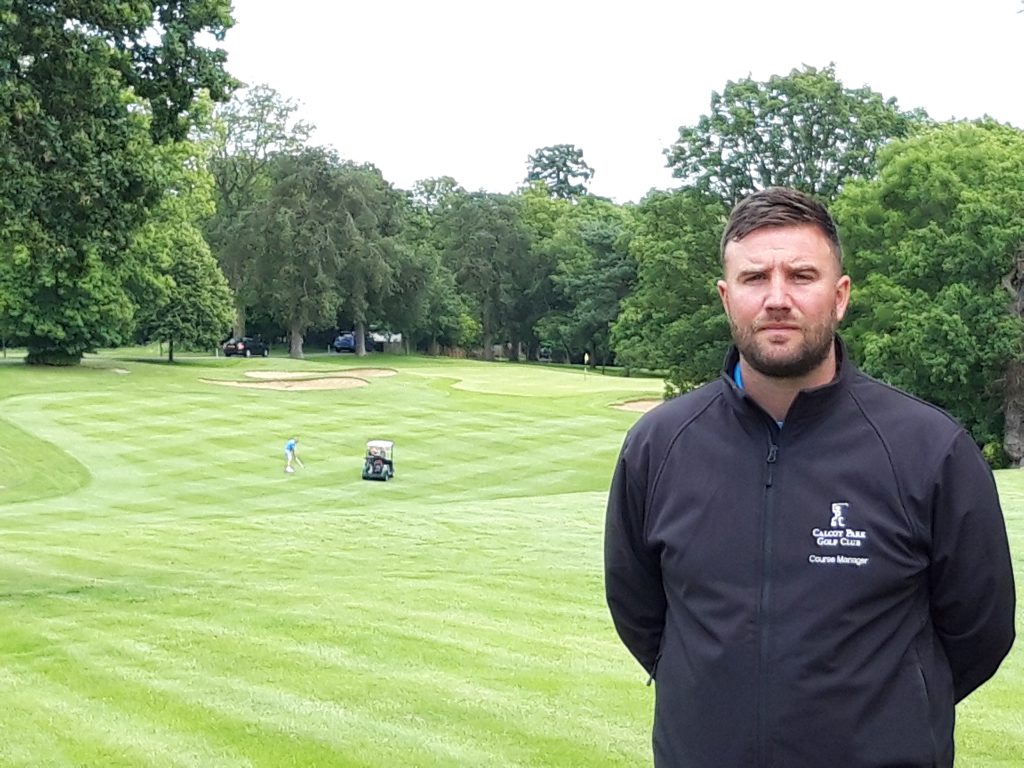
Albeit the club is looking to upgrade the irrigation system, how are you currently ensuring best water management practices and what tools are enabling you to deliver the best results?
The club recently purchased the POGO moisture meter; it is a water management tool that has enabled me to get the best out of my current water system. Using the POGO has allowed me to change the irrigation programme so I get better results and, more importantly, improve consistency throughout the course.
The current irrigation system we have is coming to the end of its life; being able to use the POGO gives me data and results on how the system is performing daily.
We are currently using a Rainbird system and are looking to potentially invest in a new system.
Social media is something that you have really got to grips with. Please can you outline you use and how you use it, and what attitude changes you’ve experienced since you have invested your time and effort into this?
Since October I have set up an Instagram account called Calcot Park Greenkeepers.
I use Instagram because I want the members and other Instagram users to see what we do, how we do it and the benefits and results for them.
Before and after photos and videos are great to look back on and show the users what practices we do and how often we do them. I have had fantastic feedback from my own membership, other golfers and other greenkeepers in the industry.
I post daily so the page is consistent and gives people an insight into the work we have done for particular tournaments.
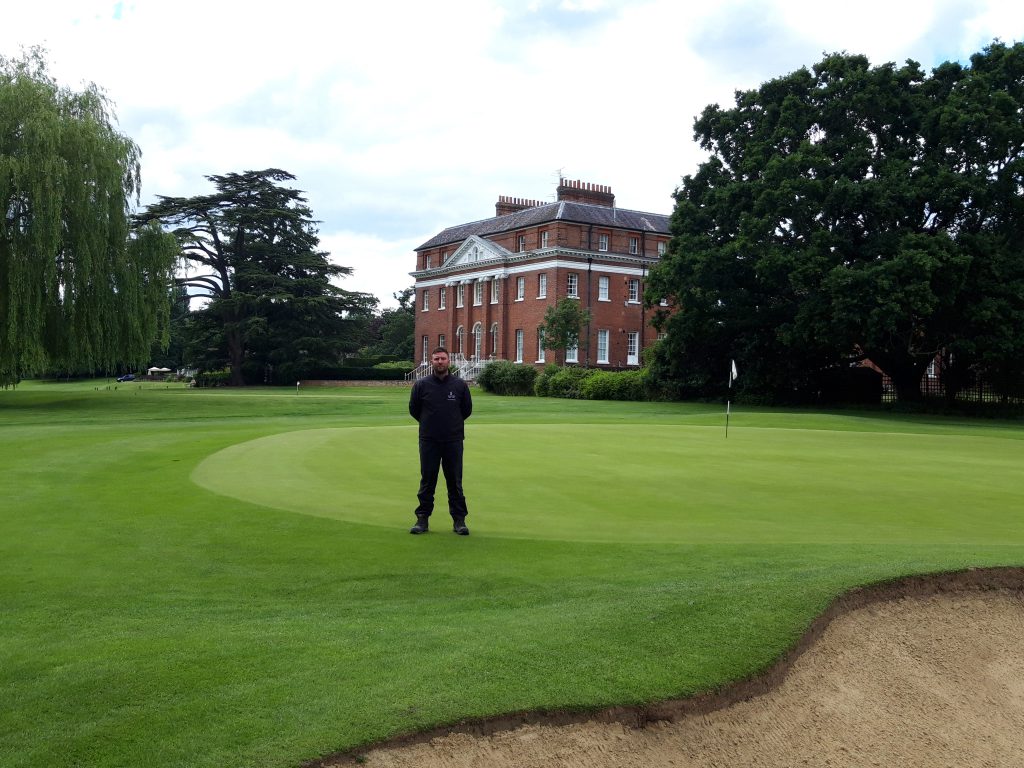
What are the current major projects you are working on across the course and over what period will the work be done?
At this moment in time aeration, top-dressing, spraying and attention to detail work are our main focus. I already have a winter plan in place where i would like to carry on with improving our pathways, bunkers and woodland management programme.
This was all started last year (2018) and for the winter months ahead we will be carrying on.

What do you think are the strengths that have carried you through your career and how do you look forward to ensuring the course keeps evolving?
I work extremely hard and have a fantastic work ethic that has been installed into me by my parents.
My desire and aim is to make Calcot Park one of the best clubs around and I will drive my team and myself to achieve this.
I have worked at a top 100 course and I know what it takes and the different skills you need to have to achieve this.
Training my team in this philosophy will make Calcot Park Golf Club one of the best around.
What height of cut do you use across the course?
Greens, 2.5 to 4mm. Aprons, 7mm. Tees, 10mm. Fairways, 13 to 15mm. Rough, 2.5 inches. This takes 40 man hours per week.

You run a heavy aeration programme. What form does this take, what equipment do you use and how often?
Since joining Calcot Park Golf Club I have upped our aeration programme and we use all different practices to achieve these surfaces.
We Air2 G2, pencil tine, Soli tine, Dyno core, scarify, Verti cut and Sarrell roll.
We use our Greentech units weekly and other forms of aeration monthly depending on our work load and weather conditions.
The greens are clay pop up. What challenges do these present and are you managing any issues of thatch?
The aeration programme in place is extremely aggressive, allowing us to hit different levels in the soil profile and reduce thatch. Increasing top-dressing levels and using a penetrate programme (Penetrate R) we are allowing moisture to move through the profile. Using good cultural practices and using the correct products, we are achieving this.
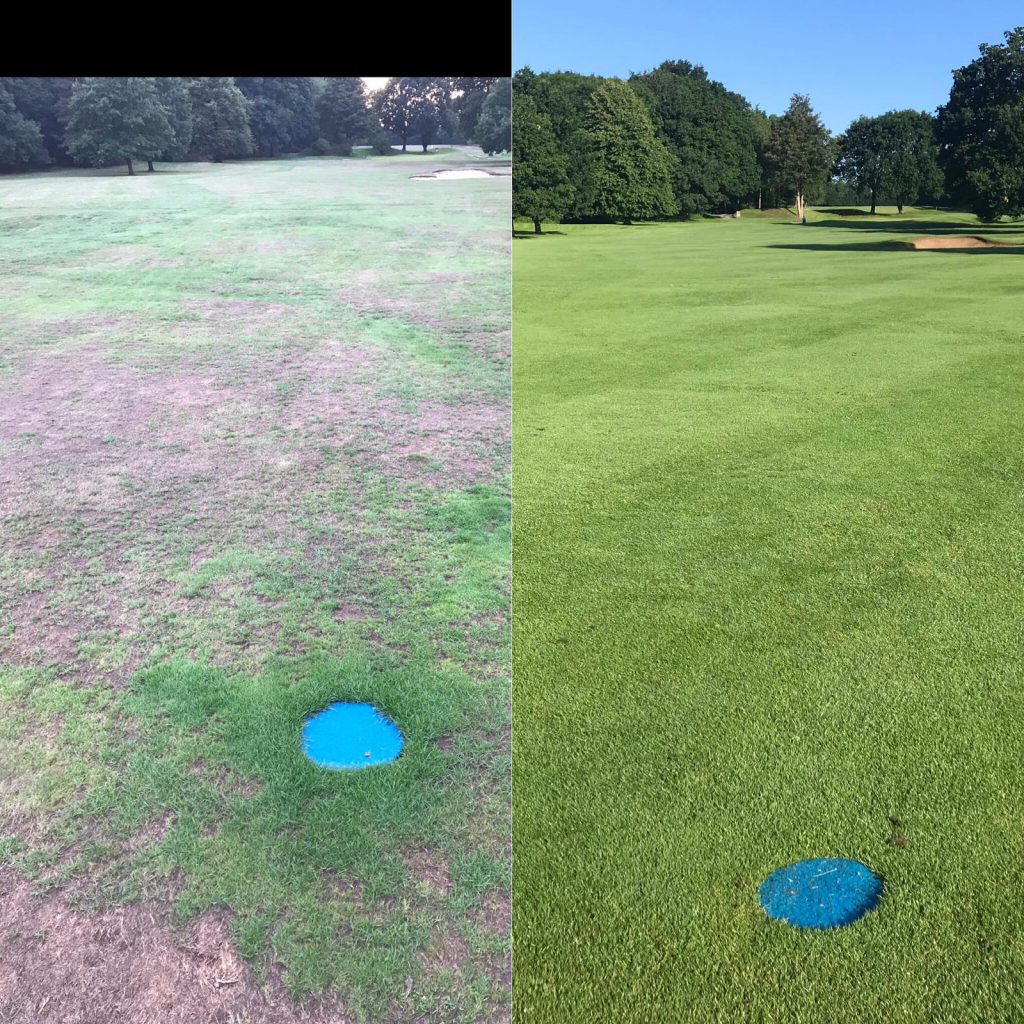
Before and after images of recent overseeding works on the first fairway – which were shared on Instagram
The course presentation by way of attention to detail looks stunning, complimented by a nice range of course furniture! How do you and the team achieve and maintain such a high standard?
Since joining in October I have put together a programme for the staff. Section work where two members of staff work on six holes each; this provides healthy competition and attention to detail. I am firm believer that the overall product of the golf course should be first class. Green speeds and firmness are important but so is having manicured bunkers, edged pathways and clean course furniture. For me, attention to detail is the most important part of keeping the course tidy and ensuring that we always go the extra mile.
The pressures on the course manager to deliver a better product are growing year on year and the level of professionalism is rising with this. What do you think are the qualities now needed to meet the requirements and demands of members / players by someone in your position and how does this help contribute to the business of golf?
The pressures on course managers are extremely high but using modern products, the best technology, social media and going to BTME, you can achieve this. Learning and training every year will help move your golf courses forward.
What currently gives you the greatest satisfaction from your job, how do you feel daily when you are moving around the course looking at what you and the team have achieved and what do you feel are your biggest achievements to date?
Going through the Instagram page and looking back at jobs via before and after photos gives me great satisfaction to see how far we have come in such a short amount of time.
The pathway constructions, overseeding fairways, aeration programme and the greens’ consistency is great to look back on.
One of my biggest achievements so far is looking how far as a team we have come with adding new staff to the existing team and how well we have jelled together. The team has been transformed and we now work together and this is showing in our work ethic and course presentation.
Attention to detail and surface consistency has been a huge factor in what we are achieving. It is also nice for us as a team to receive verbal feedback from members saying how much they are enjoying the changes to the course and how much it has improved.
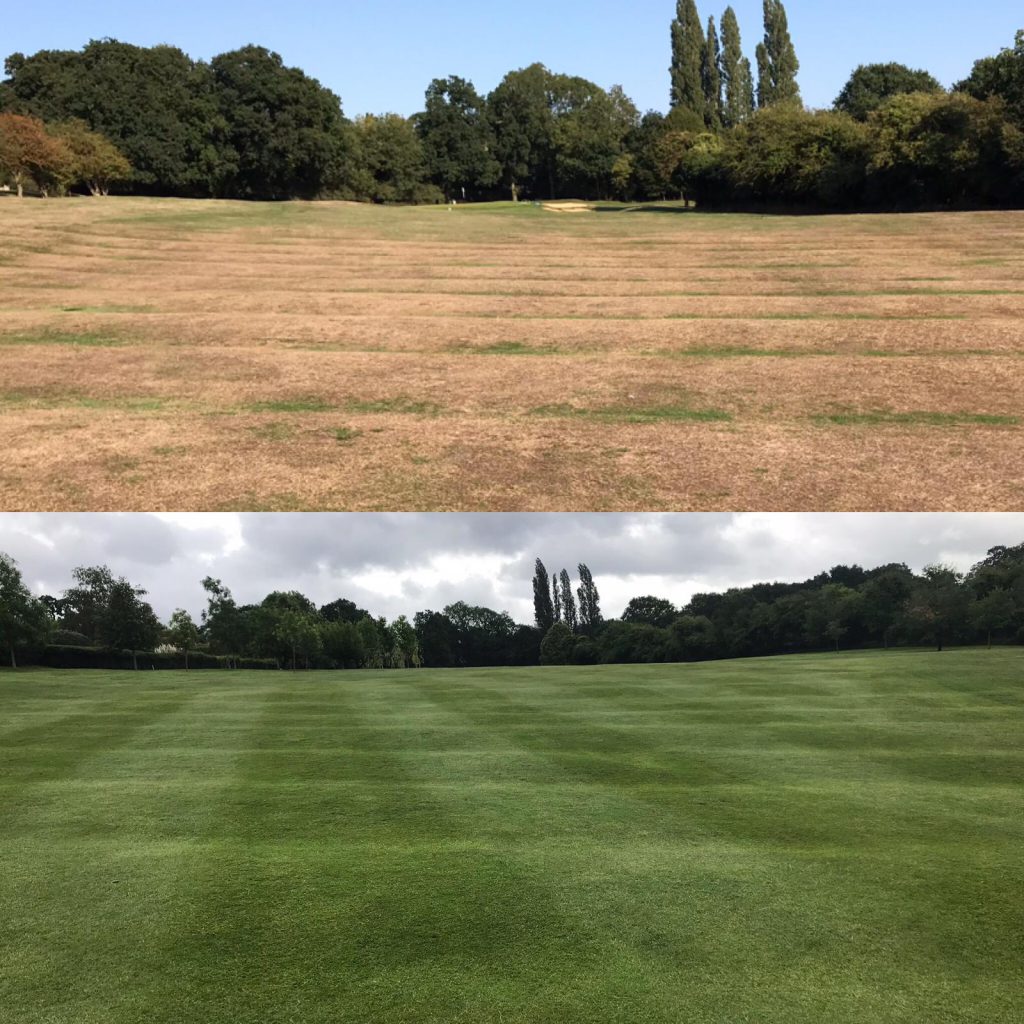
Above, the 15th fairway in October 2018, before it was treated with overseeding, aeration, wetting agents, feeding and sharp mowers
With your career experience, what advice would you give to youngsters starting out and wanting to pursue a career in the profession?
Get on as many courses and training days as you can, get your qualifications and do as much research as you can. I think playing golf, going to different courses and looking at how other courses are prepared will improve you as a person and a greenkeeper. Most importantly enjoy what you do; I wake up every morning and love going to work to do the job that I do.
What changes do you think need to be made to benefit the industry sector and profession of the greenkeeper?
I think that education programmes are very important and the industry needs to ensure that they keep bringing out new courses in ways to test the green staff.
Courses also need to be made more affordable so more people can access them. I also think the golf clubs need to improve their relations with the green staff and should allow them to compete and be a part of their club. The club should do this so the staff are able to experience what they create to a higher standard.















Let me tell You a sad story ! There are no comments yet, but You can be first one to comment this article.
Write a comment